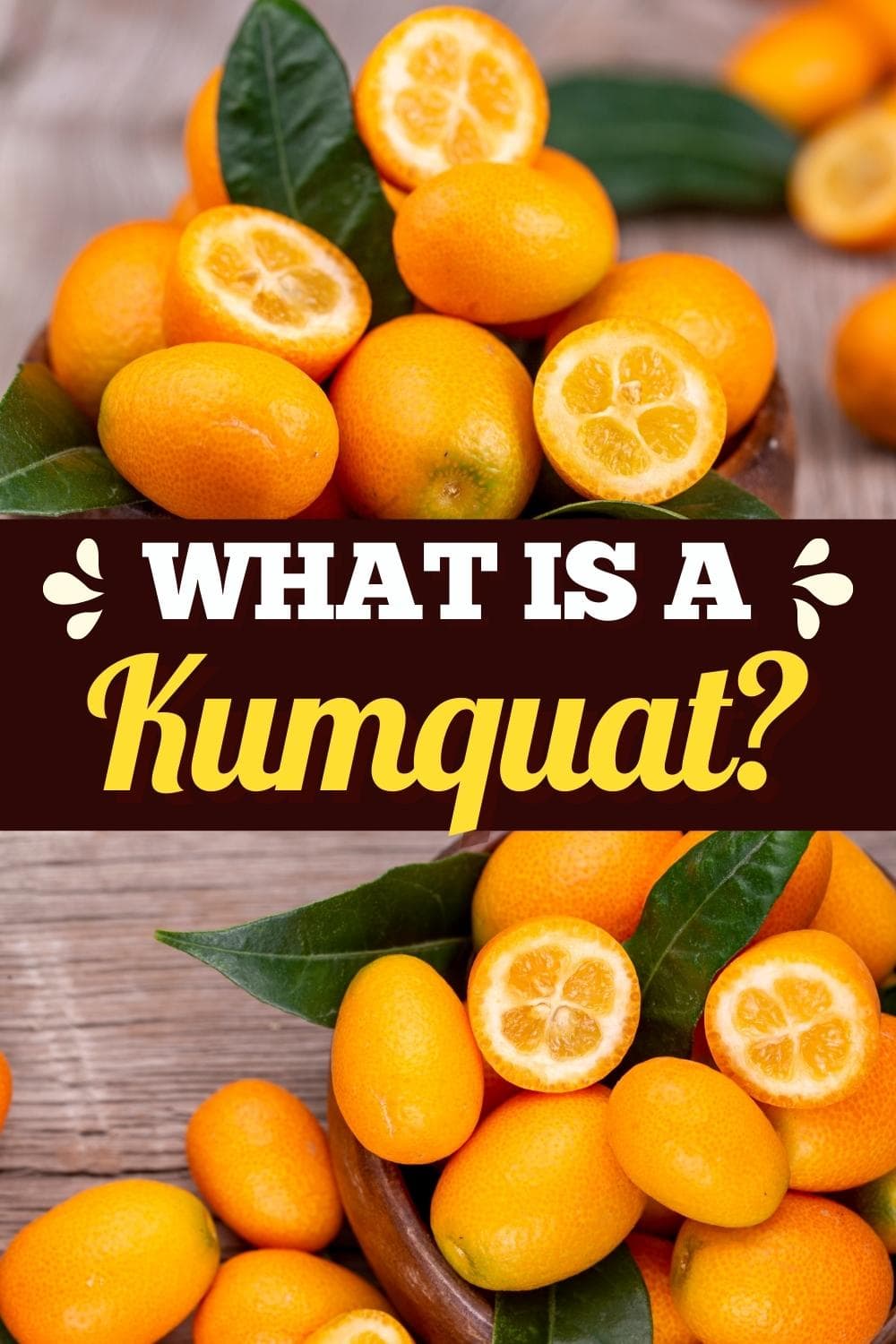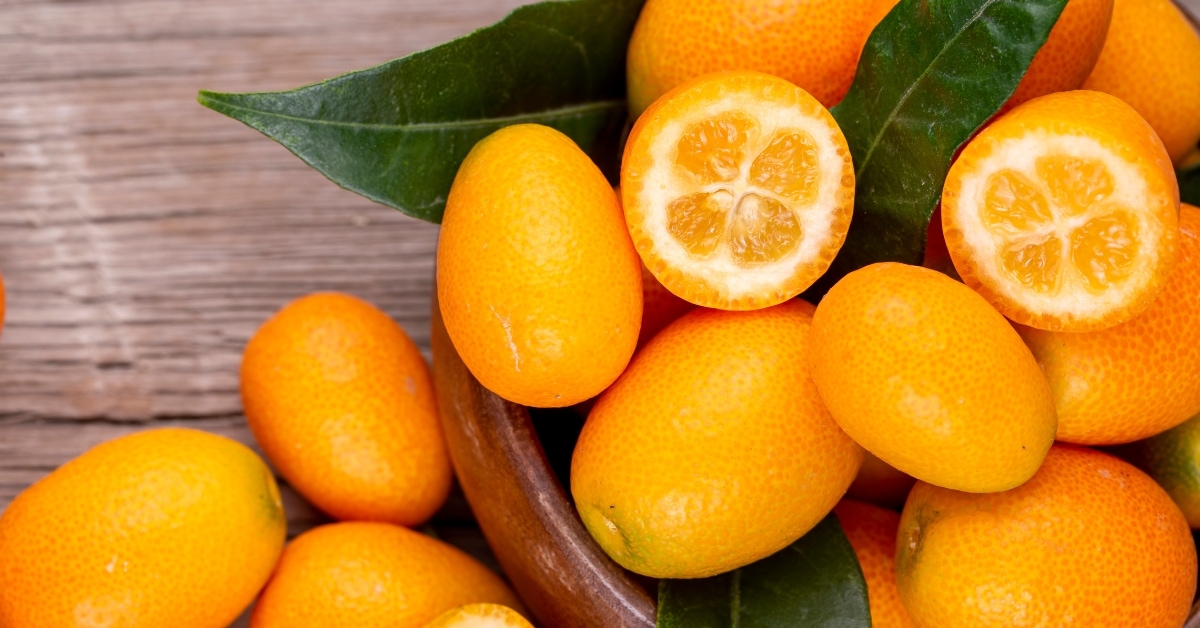Have you ever asked, “What is a kumquat?“ If you’ve stumbled upon an unfamiliar orange, oval-shaped fruit… you’re not alone.
Kumquats are tiny citrus fruits that look like elongated miniature oranges. They have a sweet and tangy flavor that’s a bit mind-boggling.
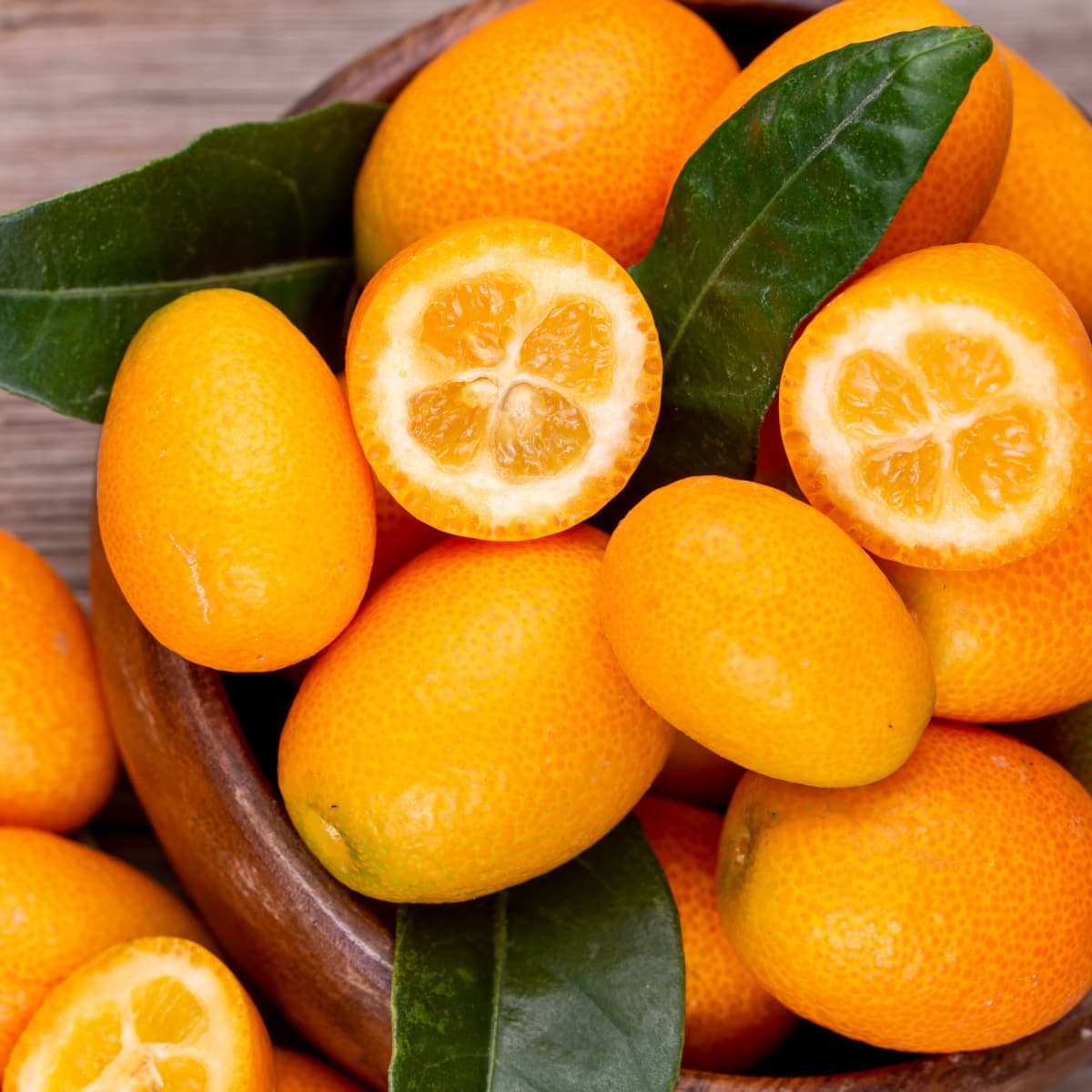
See, kumquats are a topsy-turvy fruit. Unlike most fruits, their sweetness comes from the peel. And its tartness from the juicy insides.
Native to Southeast Asia, these little gems are now sold globally.
They add a delicious, fruity touch to all kinds of dishes. And you can even gobble them up straight from the tree.
What Is a Kumquat?
So, what is a kumquat? A kumquat is a tiny citrus fruit similar in appearance to an orange. However, they’re much smaller… think olive-sized.
The name “kumquat” comes from a Cantonese word meaning “golden orange” or “golden tangerine.”
The first known mention of kumquats can be traced back to 12th-century China.
Kumquats have long been a staple in China, Japan, India, and Taiwan. But it wasn’t until the mid-1800s that they made their way to Europe.
And they didn’t stop traveling.
By 1850, these cute little fruits found their home in North American gardens.
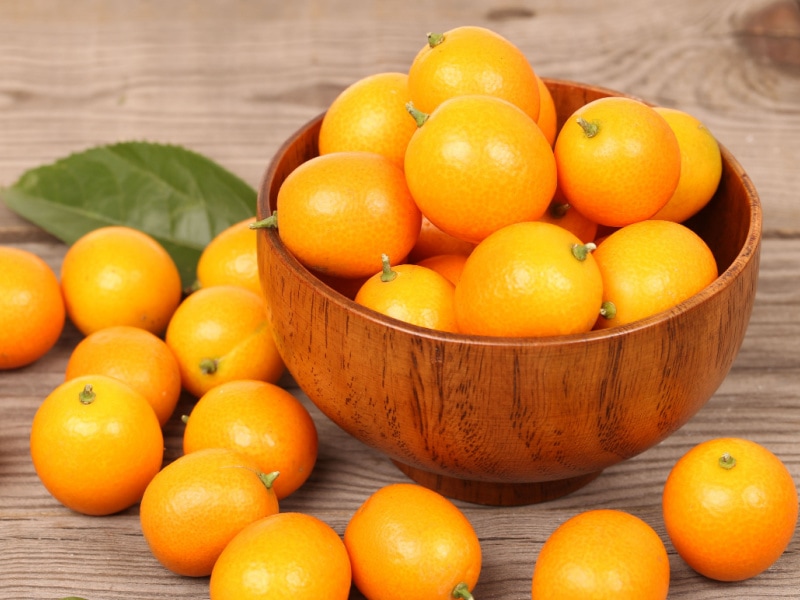
What Does a Kumquat Taste Like?
Kumquats have a fantastic flavor, perfectly balanced between sweet and tart. Its sweetness comes from its skin, while the inside has this tangy, almost sour kick.
When you pop a kumquat into your mouth, the flavors blend. And your tongue is rewarded with a bright citrusy sensation.
It tastes like a mix of oranges, lemons, and tangerines rolled into one tiny fruit. Dare I say that kumquats are the ultimate citrus fruits? Possibly.
Kumquat Varieties
There are a few different kumquat varieties. The two most popular ones are the Nagami and the Marumi.
Nagami: This is the most common kumquat tree in the United States. It’s a small, evergreen plant with dark green leaves.
This variety of kumquat tree is pretty low-maintenance. So even inexperienced gardeners can enjoy growing kumquats themselves.
Nagami kumquats are tarter than the Meiwa variety. But their tartness does not detract from their deliciousness!
But the best part?
Fruit trees always start by flowering. So, you get to enjoy the bonus of their sweet-smelling white flowers before they fruit.
Meiwa: Meiwa kumquats are more common in Asia, especially in China. They made their way to the United States from Japan in 1910. Sadly, they’re still rare in the West.
Their sweet taste and round shape is what sets Meiwa kumquats apart.
How to Eat Kumquats
I’ll be honest, there’s not a lot of technique required to eat a kumquat. Just pop the whole thing in your mouth, peel included!
But here’s a tip: give the kumquat a gentle roll between your fingers before eating.
This releases the essential oils in the peel. And you get to experience the fruit’s full flavor!
You can blanch the kumquats if you prefer a softer peel. Boil them in water for about 20 seconds. Then, transfer them immediately to an ice bath.
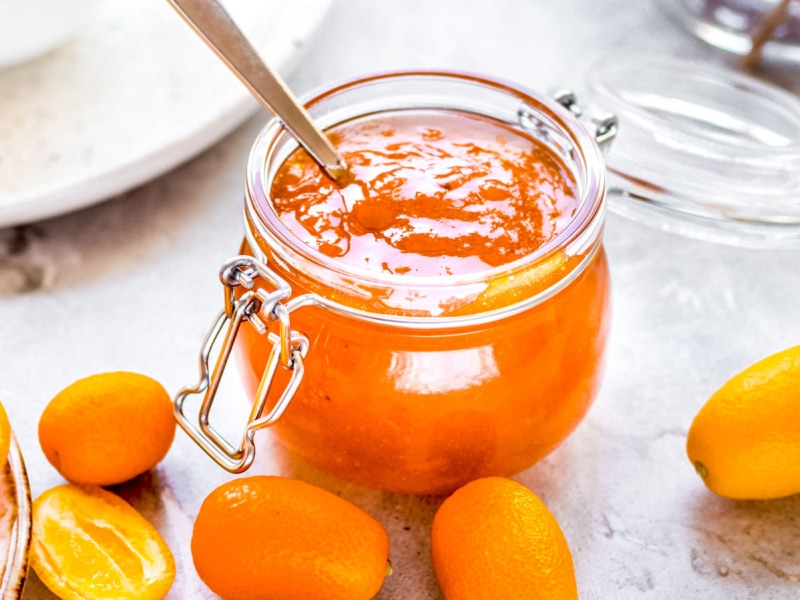
How to Cook with Kumquats
Here are some fun and creative ways you can cook kumquats:
- Kumquats are perfect for making marmalade, thanks to their sweet and sour flavor. Their seeds contain pectin, which helps thicken your marmalade and gives it a lovely texture.
- Preserve kumquats by pickling them. It’s super easy to do and keeps some of their sweetness intact. Enjoy pickled kumquats as a snack, or add them to salads.
- The acidity in kumquats makes them a fantastic addition to decadent meat dishes. Their tartness helps cut through the richness, adding balance to your meal.
- Candied kumquats are a tongue-tantalizing treat. These make excellent holiday gifts or cocktail garnishes, adding a unique touch to any celebration.
- Cooking kumquats in soup mellows their intense flavor while softening their texture. Give your soups an exciting twist by adding a handful of these little citrus wonders.
Tips for Buying Kumquats
Ready to buy and use kumquats, but not sure where to start? Check out these tips:
- Kumquats are in season in the United States from November to June. Availability may vary depending on your location.
- Don’t wait too long to buy them, or you might miss out!
- Look for kumquats in supermarkets, gourmet food stores, and Asian grocery stores. Do you live in a kumquat-growing state? Then, check out your local farmer’s markets.
- Common varieties include Nagami (oval-shaped) and Meiwa (round and sweeter).
- Can’t find them locally? Order kumquats online!
- Choose organic kumquats if possible since you eat the peel. If not, wash them well to remove any pesticide residues.
- Pick plump, firm, and orange-colored kumquats. Avoid green, unripe fruits or those with soft spots or discolored skin.
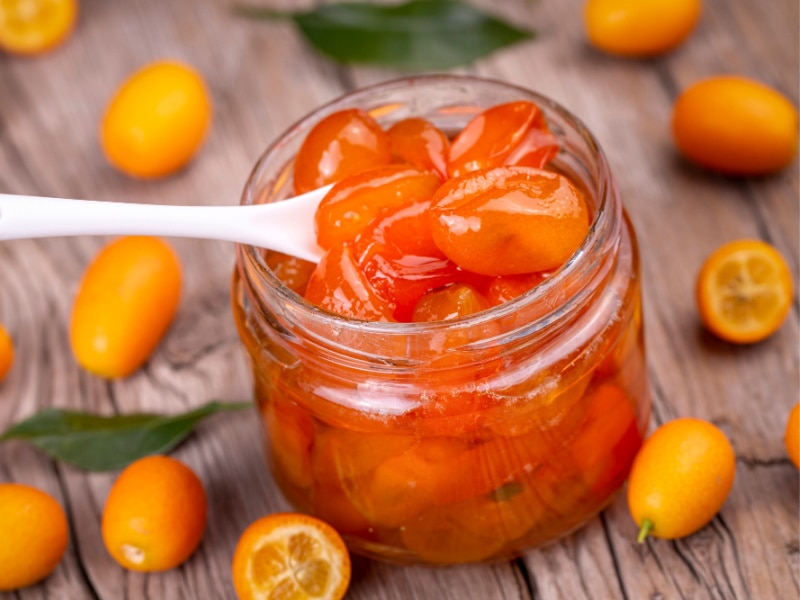
How to Store Kumquats
Unfortunately, kumquats’ thin peels make them more vulnerable than their citrus cousins. But don’t fret! Here’s how to store them:
For a few days: Keep kumquats in a paper bag on the counter at room temperature. They’ll stay fresh and ready for snacking.
Up to a week: Place kumquats in an airtight bag in the refrigerator. They’ll stay fresh for up to a week.
